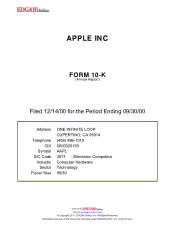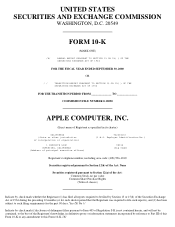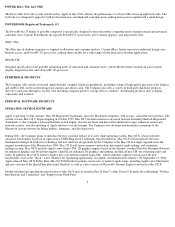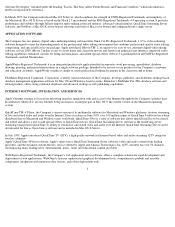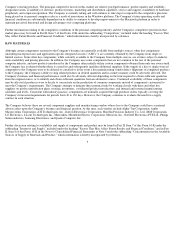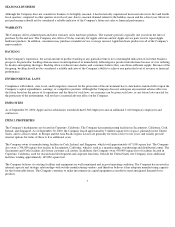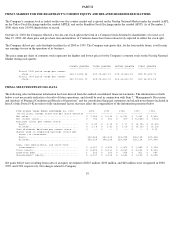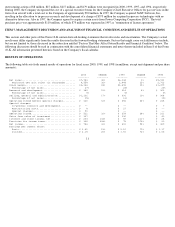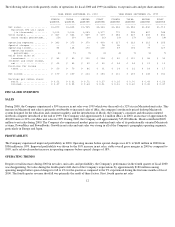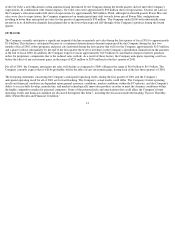Apple 2000 Annual Report Download - page 7
Download and view the complete annual report
Please find page 7 of the 2000 Apple annual report below. You can navigate through the pages in the report by either clicking on the pages listed below, or by using the keyword search tool below to find specific information within the annual report.Apple currently offers four free Internet services collectively called iTools. KidSafe is a service designed to control children's use of the
Internet by making only approved websites available to them. Mac.Com is an email service run by Apple. iDisk offers users 20 megabytes of
private or public storage on Apple's Internet servers. HomePage allows users to create their own personal website hosted by Apple with
personalized content including data, pictures, and movies. In addition to the four iTools, Apple also offers on its corporate website iReview, an
Internet site review guide, and iCards, an electronic greeting card service.
In January 2000, the Company and EarthLink Network Inc. (EarthLink), an Internet service provider (ISP), entered into a multi-
year agreement
to deliver ISP service to Macintosh users in the United States. Under the terms of the agreement, the Company profits from each new Mac
customer that subscribes to EarthLink's ISP service, for a specified period of time, and EarthLink is the default ISP in Apple's Internet Setup
Software included with all Macintosh computers sold in the United States.
THIRD-PARTY SOFTWARE PRODUCTS
Thousands of third-party software titles and solutions are available for the Macintosh platform. The Company sells a variety of these third-
party software products directly to end users through its on-line store. Additional information regarding the Company's relationship with and
dependence upon third-party software developers, including Microsoft Corporation, may be found in Part II, Item 7 of this Form 10-K under
the subheading "Support from Third-Party Software Developers" included under the heading "Factors That May Affect Future Results and
Financial Condition," which information is hereby incorporated by reference.
MARKETS AND DISTRIBUTION
The Company's customers are primarily in the education, creative, consumer, and business markets. Certain customers are attracted to
Macintosh computers for a variety of reasons, including the reduced amount of training resulting from the Macintosh computer's intuitive ease
of use, advanced graphics capabilities, industrial design features of the Company's hardware products, ability of Macintosh computers to
network and communicate with other computer systems and environments, and availability of application software. Apple personal computers
were first introduced to education customers in the late 1970s. In the United States, the Company is one of the major suppliers of personal
computers for both elementary and secondary school customers, as well as for college and university customers. The Company is also a
supplier to institutions of higher education outside of the United States.
The Company distributes its products through wholesalers, resellers, national and regional retailers and cataloguers. During 2000, a single
distributor, Ingram Micro Inc., accounted for approximately 11.5% of net sales. No other customer accounted for more than 10% of net sales
during 2000, and no individual customer accounted for more than 10% of net sales in 1999 or 1998. The Company also sells many of its
products and resells certain third-party products in most of its major markets to consumers, certain education customers, and certain resellers
either directly or through one of its on-line stores around the world. During 2000, net sales attributable to the Company's on-line stores totaled
approximately $1.7 billion.
COMPETITION
The market for the design, manufacture, and sale of personal computers and related software and peripheral products is highly competitive. It
continues to be characterized by rapid technological advances in both hardware and software development, which have substantially increased
the capabilities and applications of these products, and has resulted in the frequent introduction of new products and significant price, feature,
and performance competition. Further, as the personal computer industry and its customers place more reliance on the Internet, an increasing
number of Internet devices that are smaller, simpler, and less expensive than traditional personal computers may compete for market share with
the
4

